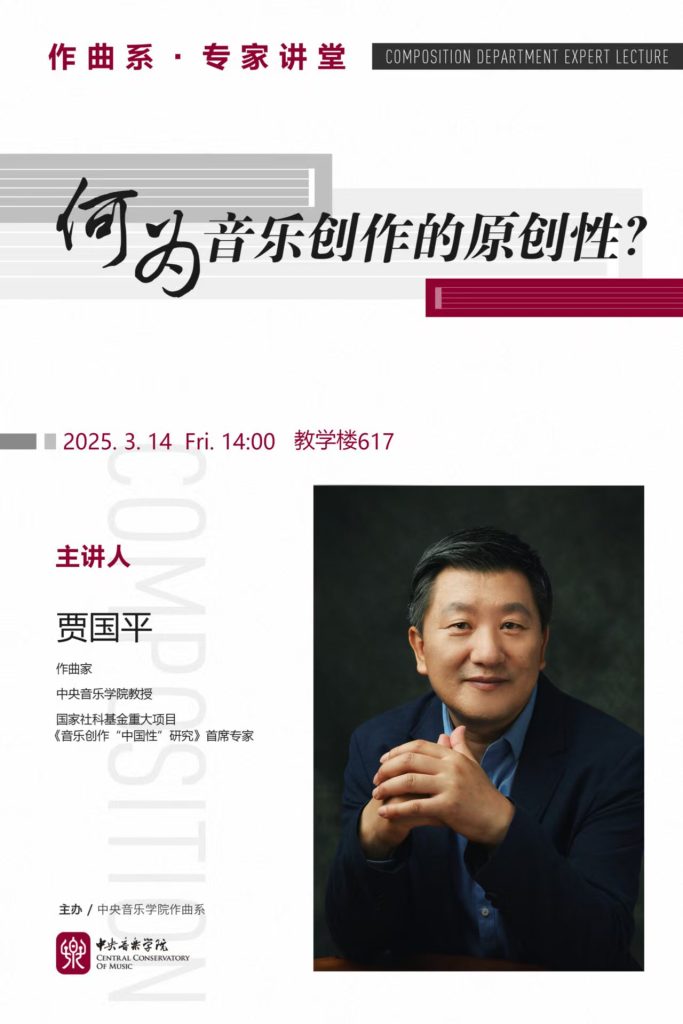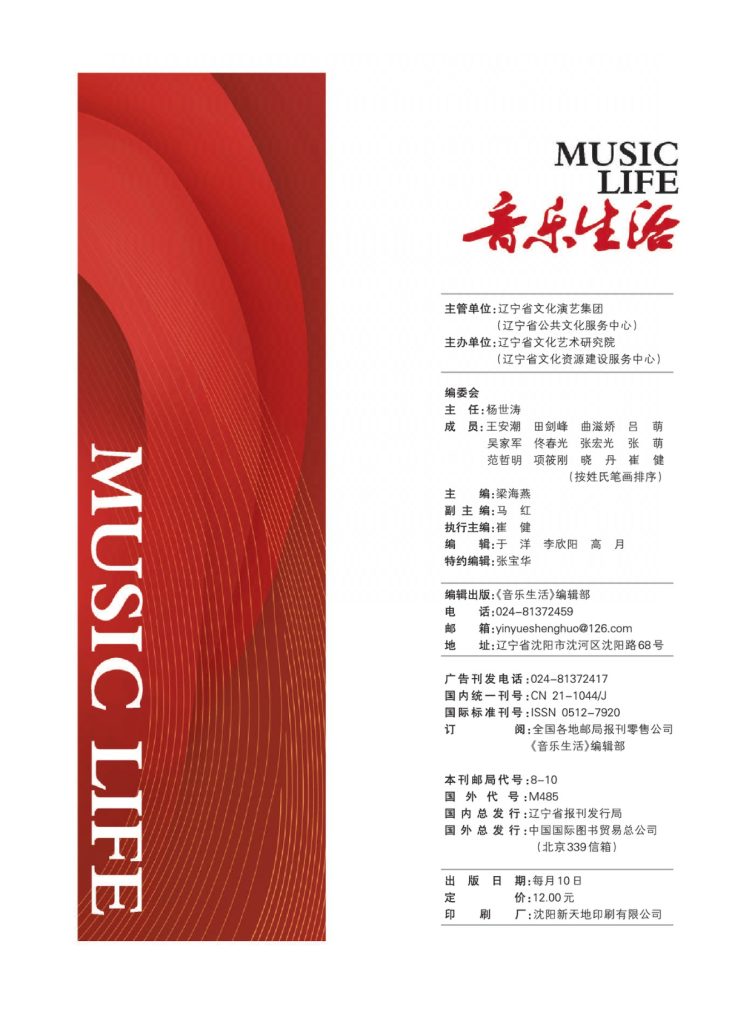
讲座预告|专家讲堂:何为音乐创作的原创性?
拉普兰室内乐团 室内乐音乐会 II:在创作的时刻与核心
https://www.sinfoniaorkesterit.fi/en/orchestra/?id=52
拉普兰室内乐团,成立于1972年,Lapland Chamber Orchestra – Rovaniemi City Orchestra 是芬兰乃至整个欧盟最北端的专业室内乐团。乐团有19名全职成员,其艺术总监是指挥家、小提琴家 John Storgårds,首席客座指挥是钢琴家、指挥家兼作曲家 Olli Mustonen。
Founded in 1972, the Lapland Chamber Orchestra – Rovaniemi City Orchestra is the northernmost professional chamber orchestra in Finland and indeed in the entire EU. The orchestra has 19 full-time members and its Artistic Director is conductor, violinist John Storgårds. The orchestra’s Principal Guest Conductor is pianist, conductor and composer Olli Mustonen.

星期四
2025年1月23日
19:00
Korundi(科伦迪艺术中心)
拉普兰室内乐团
室内乐音乐会 II:在创作的时刻与核心
演出者
Jean-Guihen Queyras,大提琴
Jérémie Queyras,艺术绘画
节目单
Johann Sebastian Bach,改编:Heribert Breuer:《C大调前奏曲与赋格》BWV 547,10分钟
Guoping Jia:《竹影萧疏》( Scattered shades),9分钟
Carl Philipp Emanuel Bach:《A大调大提琴协奏曲》Wq 172,20分钟
Johann Michael Haydn:《G大调嬉游曲》MH 518,14分钟
Ennio Morricone:《夜曲与帕萨卡利亚》(2002年),7分钟
Joseph Haydn:《C大调大提琴协奏曲》第1号,24分钟
特别提示:
音乐会期间,艺术家 Jérémie Queyras 将现场创作绘画作品。

Korundi House of Culture
位于罗瓦涅米市内的Korundi文化艺术博物馆,是罗瓦涅米艺术文化的核心。这里有多场音乐会举行,其中最著名的是拉普兰管弦乐团的演出。
2025年1月24日
18:00
Kuusamotalo(库萨莫文化中心)
拉普兰室内乐团
室内乐音乐会 II:在创作的时刻与核心
演出者
Jean-Guihen Queyras,大提琴
Jérémie Queyras,艺术绘画
节目单
Johann Sebastian Bach,改编:Heribert Breuer:《C大调前奏曲与赋格》BWV 547,10分钟
Guoping Jia:《竹影萧疏》( Scattered shades),9分钟
Carl Philipp Emanuel Bach:《A大调大提琴协奏曲》Wq 172,20分钟
Johann Michael Haydn:《G大调嬉游曲》MH 518,14分钟
Ennio Morricone:《夜曲与帕萨卡利亚》(2002年),7分钟
Joseph Haydn:《C大调大提琴协奏曲》第1号,24分钟

一个中国城市的历史想象与当代书写— 评贾国平交响乐《宁波组曲》
《宁波组曲》城市文化的现代性历史声音文本解读
《铙歌》为民族室内乐队(2019)
Nao Ge for the Chinese Chamber Orchestra (2019)
从秦风汉月到隋唐气象,西北苍茫大地孕育、承载的千年昌盛,离不开这片厚土塬上人们的胸襟开阔、粗犷豪迈与自强不息。本曲借汉乐府《铙歌》的形式,采用梆子腔戏曲的板腔体结构,表达与传扬中华民族奋斗不息的民族精神。
From the Qin and Han dynasties to the Sui and Tang dynasties, thousand-year-old prosperity bred and carried by Northwest China is inseparable from the openness, boldness, and self-improvement of people living on the Loess Plateau. The work makes use of the musical form of Nao Ge in Yuefu songs of Han Dynasty and the structural methods of Banqiang musical system in the traditional Bangzi operas to express and spread Chinese people’s national spirit of ceaseless struggle.
《万古江河》 为古筝、竖琴与管弦乐队(2023)
Eternal River – for Guzheng, Harp and Orchestra(2023)
长度:约10分
古筝:苏畅 竖琴:王冠
世界首演
曲目介绍
河流是生命之源,也是文明之光。亘古奔涌的江河,滋养了不同地域人类古文明的诞生与壮大。它不仅是人类繁衍生息的物质条件与地理空间,也是人类思想、语言、情感等得以形成与发展的精神之本。
此作品借用历史学家许倬云《万古江河》一书之名,力图在作品中展现一条绚烂、多变的时间之河、历史之河。从涓涓细流到历经暗礁、险滩与风暴,作曲家意在以河流隐喻人类文明发展的艰辛历程。
Program note
JIA GUOPING Eternal River – for Guzheng, Harp and Orchestra(2023)
Duartion: ca.10 min.
Guzheng: SU Chang, Harp: WANG Guan
World premiere
Rivers are not only the source of life but also the light of civilization. The everlasting rivers give life to the ancient human civilizations and grow in many different regions. They are not only the conditions and spaces for human life, but also the spiritual foundation for the development of human thoughts, languages, emotions, etc.
The name of this work originally came from the book Wangu Jianghe (Eternal River) by historian Cho-yun Hsu, trying to show a splendid but varied river of time and history in the work. The river starts from a trickle of streams and rushes through reefs, rapids and storms, which is used by the composer as a metaphor for the arduous journey of human civilization development.
吴翊丞教授关于央音作曲家贾国平的论文在美国音乐理论学会的视频期刊出版!

相关信息:音乐学现状(公众号) Bilibili(视频链接)
张浩哲|妥协抑或兼容——谈贾国平《宁波组曲》
中国作曲家新作品赴美演出预演音乐会




